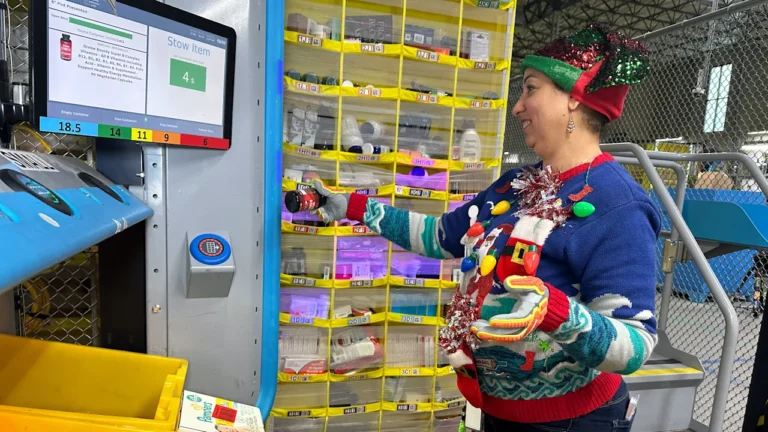
In September 2023, we thought we had done something revolutionary. Helios AI became the first company in our industry to launch a generative AI agent. We called her Cersi. She was designed to help food companies understand the climate risks threatening their agricultural supply chains. She was powerful, intuitive, years ahead of the curve—and almost completely ignored.
At the time, ChatGPT had just exploded onto the scene, and the hype around AI was deafening. Headlines promised that AI would transform every corner of business. Venture capital poured into the sector. But hype doesn’t always translate into real-world use—especially in industries that aren’t built to adopt change quickly. Food procurement, where billion-dollar decisions hinge on weather patterns and multiyear contracts, not to mention generational relationships and personal rolodexes, is one of those industries. In a space where legacy companies tout decades of experience, newness isn’t always a boon. We assumed that if we built something technically advanced, adoption would follow. We were wrong.
Why our first AI agent failed
Cersi was conceived as a conversational assistant. Type a question about your supply chain into a chat box, and she would pull from Helios’s massive dataset to provide a rich, insightful answer. It sounded futuristic, and on technical merit, it worked. But the glaring problem was, it didn’t fit the way our customers actually worked.
First, they didn’t want to “chat.” Procurement executives, commodity traders, and risk managers wanted structured, decision-ready insights. They wanted something they could paste into a slide deck for the CFO, or drop into an email to their sourcing team. A conversational AI, however clever or time-saving, wasn’t the format they needed.
Second, most users kept asking the same five questions again and again. That told us something important: their needs weren’t open-ended. They wanted repeatable analysis, standardized for their business, not a new way to brainstorm with an algorithm. Finally, and perhaps most critically, Cersi sometimes produced answers that were technically correct but felt superficial. In an industry where credibility and precision matter, “close enough” wasn’t good enough.
What we learned
The biggest lesson was simple but humbling: AI itself isn’t the product—the outcome is. In other words, customers don’t care how elegant your models are. They care if your product saves them time, reduces their risk, or helps them make a better decision in a high-stakes environment. We had fallen into the classic founder trap of building something because we could, not because our customers had asked for it.
But we had still built something exceptional and groundbreaking in its industry, beyond what the standard benchmarks in the field were capable of. So a few months after Cersi’s underwhelming debut, we reimagined her role. Instead of a front-end chatbot, she became a behind-the-scenes analyst. Rather than flowing conversation, she was rebuilt to generate thousands of custom agricultural reports every month—each tailored to a customer’s commodities, sourcing regions, and climate risks. These reports would land directly in a customer’s inbox or workflow, in the format they need, where they can actually use them.
In shifting Cersi from a “face” to a “function,” adoption skyrocketed. The AI didn’t become less powerful, it just became better integrated. In making our AI less visible, it became much more useful. As the saying goes, good design should be invisible.
Building on that success, last month, almost two years after Cersi’s flop, we launched Helios Horizon, the first multi-agent platform in our industry. It’s designed to handle complex, interconnected tasks that a single agent couldn’t. Instead of one assistant, Horizon uses a coordinated set of AI agents that monitor risks, flag disruptions, and deliver analysis specific to each customer’s supply chain. This level of advanced AI would’ve been hard to imagine back in 2023, but we’d taken our lessons from Cersi to heart.
The next wave of AI adoption will look different from the hype cycle of 2023. Enterprises aren’t asking whether AI is possible anymore. They’re asking if it’s practical, trustworthy, and built to fit their workflows. And those are harder questions to answer.
3 takeaways for Founders
1. Great AI isn’t enough
The technology has to map directly to real workflows and be right-sized for the industry it serves. In 2023, most of our customers had barely used a chatbot, and they weren’t ready to experiment with one in their jobs. Today, after nearly two years of ChatGPT in the mainstream, familiarity is higher. We no longer have to teach people what a natural-language interface is—but we still have to prove why it matters in their world.
2. Users don’t want AI—they want its benefits
Our customers don’t wake up excited to “use AI.” They wake up trying to secure coffee from Brazil or wheat from Kansas before climate shocks, trade restrictions, or shipping delays throw their budgets into chaos. What matters most is the outcome: did the system save them hours of manual analysis? Did it prevent a costly mistake? That’s why one of Horizon’s most popular features is simple: it shows customers how many hours we’ve saved them. Time is a currency they value even more than insights.
3. The best AI isn’t visible
The future of AI in the enterprise isn’t necessarily chatbots or flashy dashboards. Often, the most valuable AI disappears into the background, quietly doing the work and surfacing results at the right time, in the right format. Cersi failing taught us that “quieter AI” can be more powerful than any buzzy avatar, co-pilot, or assistant. Horizon was built with that in mind.
For founders building in this space, the lesson we learned is clear: resist the temptation to build AI for the hype cycle. In fact, do the very opposite—build your AI not to be the flashy new thing, but to be so good that it becomes invisible.

